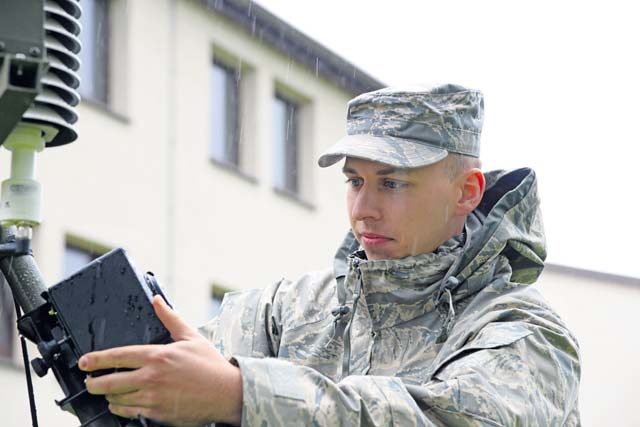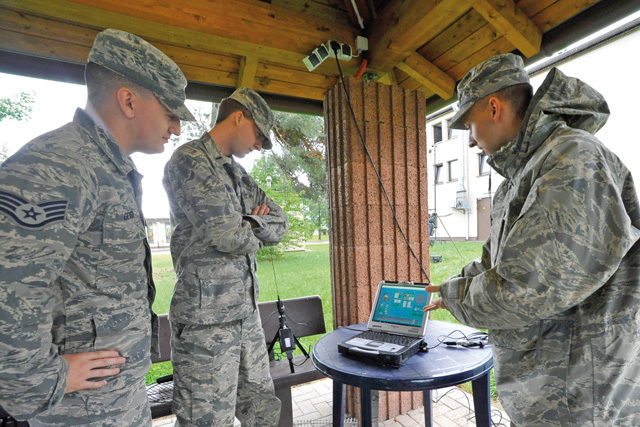
Airmen assigned to the 21st Operational Weather Squadron held the first Warfighter Weather Conference, Sept. 14 to 16, on Kapaun Air Station.
Thirty-three units assigned to several combatant commands, NATO partners, and sister services attended the conference with the intent to educate and network between operators and leadership in support of the warfighter.
“Networking, a big thing about this conference is networking,” said 2nd Lt. Matthew Wetmore, 21st OWS assistant flight commander. “How can we help our customers out and how can we help each other out to better support the mission.”
Throughout the conference the service members broke down their unit’s respective areas of responsibility, capabilities, and duties for a clear understanding of each unit’s role in supporting the war-fighter.
“It was very useful to listen to all the different briefs and what the different units do to help the warfighter,” said Wetmore. “It helps us understand what each units does better, so if I do have an issue, I know exactly who I need to talk to.”
The efforts made during the Warfighter Weather Conference are projected to increase productivity and mission efficiency through the relationships made and the capabilities that coincide.
“I think it’s going to be immensely more efficient,” said Wetmore. “The thing about this conference is it’s an open house, so they can just come down and talk to the forecasters who actually forecast for their base. This allows them to talk about their processes and procedures which strengthens relationships, so you actually know the other person on the end of the phone and how they operate.”
By understanding each unit’s specific role in supporting the warfighter, weather services are able to ensure success while supporting the global mission.
“The Warfighter Weather Con-ference will create an atmosphere of better communication between the units,” said Senior Master Sgt. Leslie Orr, 21st OWS operations superintendent. “This will not only enhance the relationship between the 21st OWS forecasters and the warfighter they support, but this communication will greatly enhance the collaboration efforts of all involved which will in turn help to create better products and support.”
For example, in response to the effects of hurricanes, like Harvey or Irma, if a weather unit in the affected area needed to close down, another unit would cover their area of responsibility to ensure continuity of operations to the warfighter. Through efforts made at the Warfighter Weather Conference that transition of responsibility is eased, promoting mission success.
“Understanding where we all fit into the bigger picture and who we need to contact or communicate with will greatly enhance the support across the globe,” said Orr. “Better communication, understanding of the mission, and development of relationships will enable us to provide better products and services that ensure the safety of the warfighter.”



